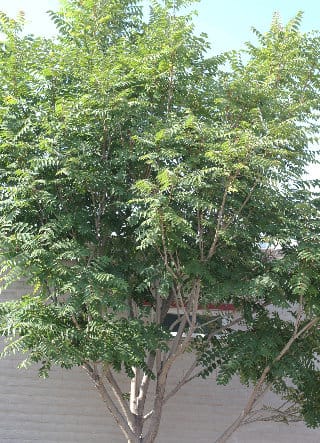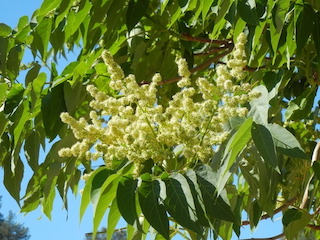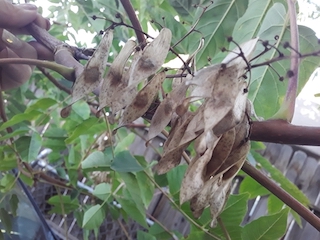This guide initially displays all weeds in the Los Alamos area classified in NM as noxious regardless of shape. Use the selectors below to include nonclassified weeds or select a specific set, either by shape or name.
The term weed is commonly used to denote a plant that is growing in an area where it is not valued. It is officially defined by the USDA Animal and Plant Health Inspection Service as being any plant that poses a threat to agriculture and/or a natural ecosystem. A noxious weed is one that is particularly troublesome and can directly or indirectly injure or cause damage to crops, livestock, or natural resources.
In general, plants that are within their native range live in balance with their environment and are not typically considered to be weeds. Issues can occur, however, if a plant is introduced, either directly or indirectly, to a new ecosystem. These, now non-native plants, may be able to thrive in their new environment. If so, these naturalized plants can fall into one or two categories long term: (1) plants that are valued for their flowers and fruit and (2) plants that are rapidly considered to be weeds. The plants in the latter category are those that are generally regarded as noxious weeds.
While some species shown here are included in the PEEC Flower and Tree Guides, this guide concentrates on some of the nastier introduced species that you might see in your yard or on local trails. In addition, this guide includes some native plants that meet the general definition of weed.
Weed References
A Plan For the Control of Invasive Species on Los Alamos County Open Space — Craig Martin [PDF]
Los Alamos Master Garden Weed List
NMSU Weed Information
SEINet: Southwest Biodiversity
Some Common Lawn and Garden Weeds of Los Alamos, NM — Dorothy Hoard and Teralene Foxx [PDF]
Troublesome Weeds of NM
USDA: Introduced, Invasive, and Noxious Plants
Weed Alert
Weeds of the Los Alamos Area — Teralene Foxx [PDF]
Subject Area Experts (all guides)
Steve Cary (butterflies)
Beth Cortright (insects)
Terry Foxx (invasive plants)
Leslie Hansen (mammals)
Richard Hansen (fish, mammals)
Dorothy Hoard (butterflies, trees)
Chick Keller (flowers, herbarium)
Shari Kelley (geology)
Kirt Kempter (geology)
Garth Tietjen (reptiles)
David Yeamans (birds)
Web Development and Content Management
Pat Bacha
Jennifer Macke
Graham Mark
Akkana Peck
Contact
Please contact us for local nature questions and sightings. We welcome comments, corrections, and additions to our guides.
For more information about local nature, please visit our Nature Blog or subscribe to PEEC This Week.
Make Selection
 Photo: Terry Foxx  Photo: Kim Ewart  Photo: rachelexplorer |  Tree of HeavenAIAL (Ailanthus altissima)Family: Simaroubaceae (Quassias) Size: up to 960 in (2,438 cm) Growth: tree; perennial Status: non-native; nonclassified Native Range: China NM Noxious Weed Class: on watch list Habitat: forest edges, fields, and roadsides Control Notes: visually inspect areas at least twice a year; pull, dig, or cut up plants; take care to remove suckers Tree of Heaven was originally imported as an ornamental garden tree in the 1780s. However, its unpleasant smell and aggressive spreading habits soon earned it the status of a noxious invasive in many areas. It can be very difficult to control as it spreads by suckering. The suckers are actually more robust than the parent from which they get nourishment. Several government agencies (USDA, Army Corps of Engineers, and the Soil Conservation Service) planted a large number of these trees in the early 1900s for the betterment of private and public agricultural, horticultural, and botanical projects. Though, the intent of these groups was good at the time, these organizations are responsible for some of the current problems with exotics causing problems with the US landscape. Ailanthus altissima is a rapidly growing medium-sized tree with smooth, light grey bark. The twigs are slightly reddish and bear lenticels or hear-shaped scars from where leaves have fallen off. Leaves are compound and arranged alternately on the stem. They are bronze when they emerge in the spring, turn green in the summer, and red in autumn. The flowers are small and appear in clusters. Male and female flowers are borne on different individual trees. The male and female flowers appear similar but trees with male flowers have more flowers. Fruit derived from the female flowers grow in clusters of samara or winged pods which can remain on the tree through winter. Each cluster may contain hundreds of seeds. Info Photos Distribution Tree Guide |
